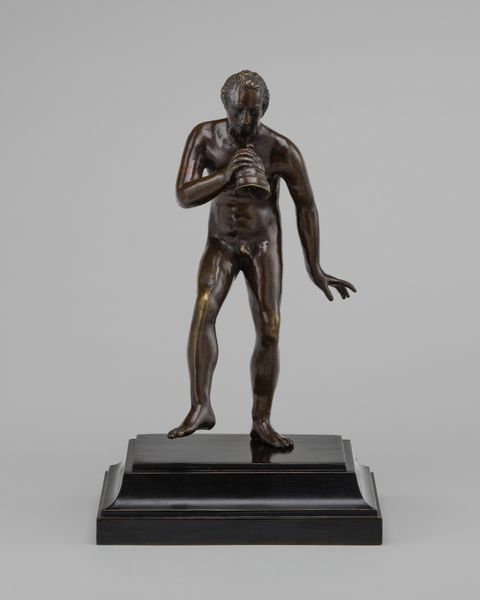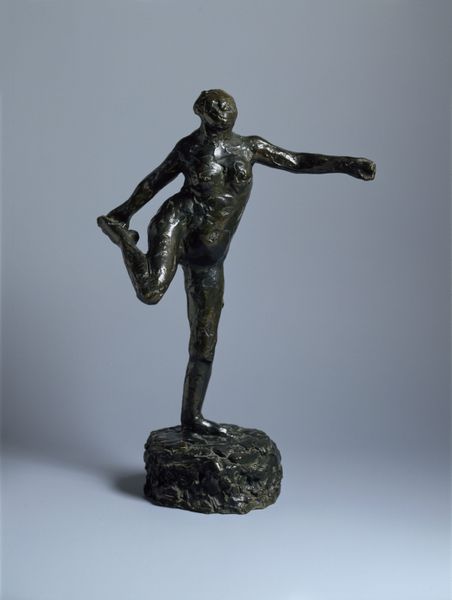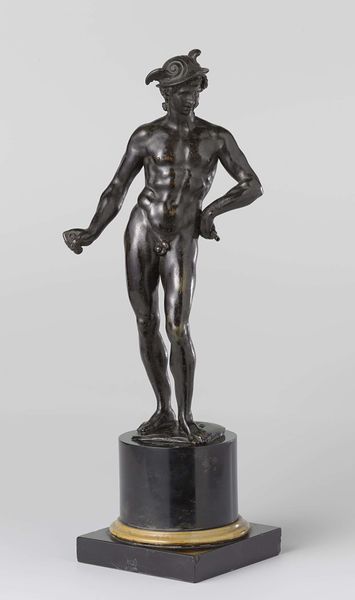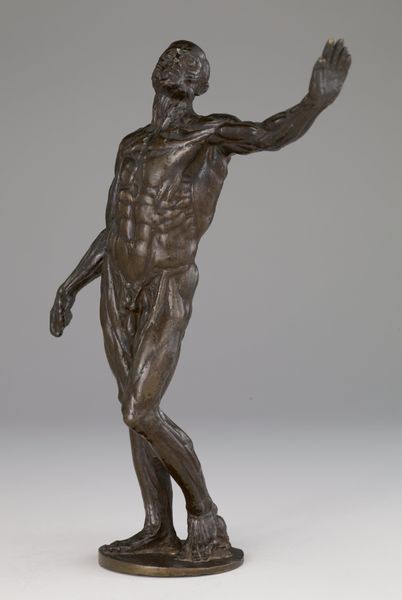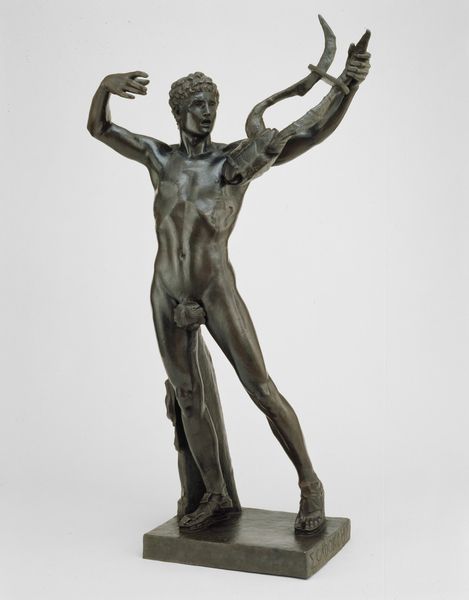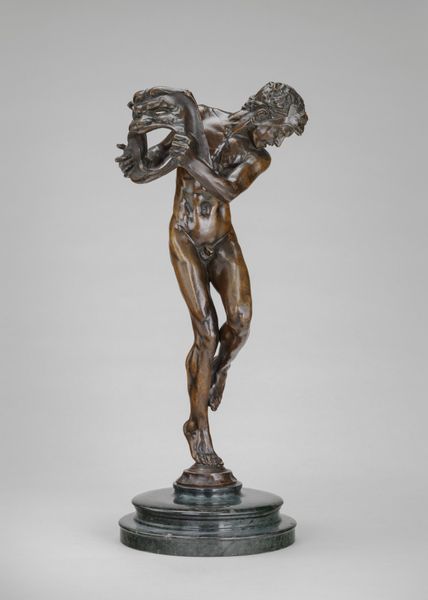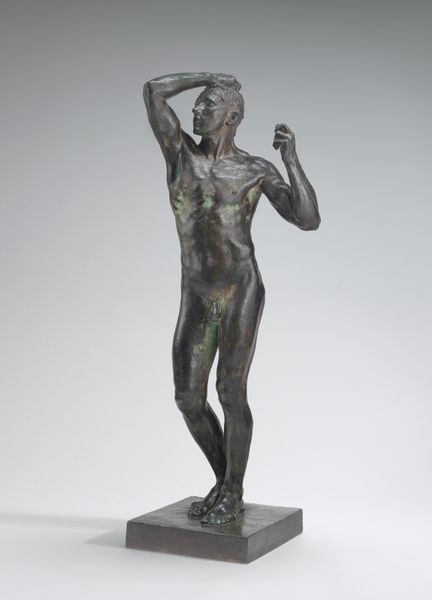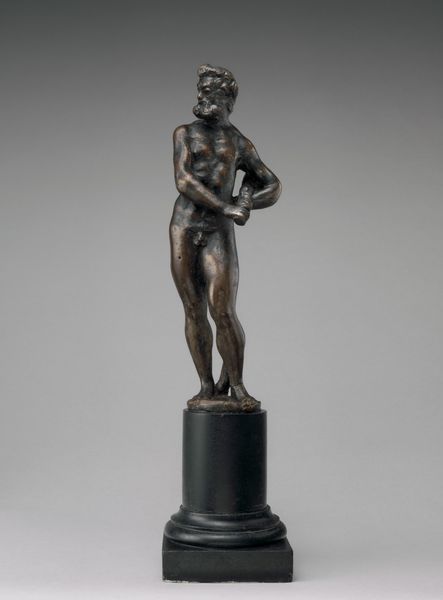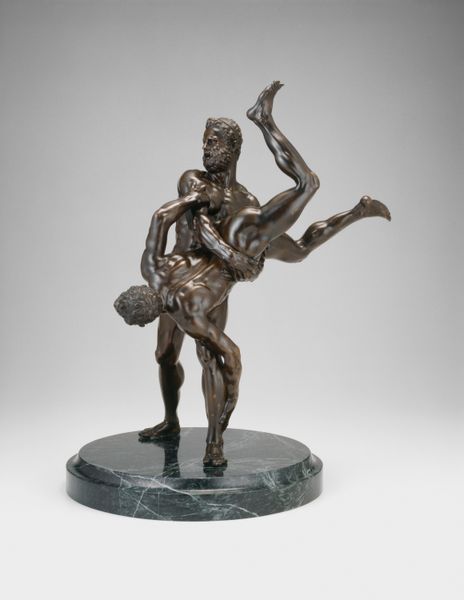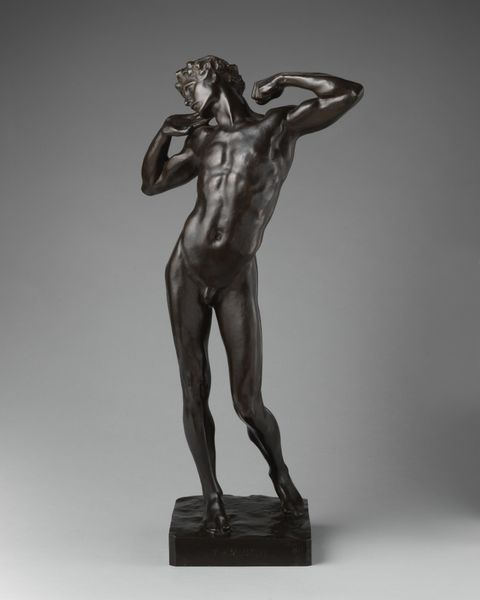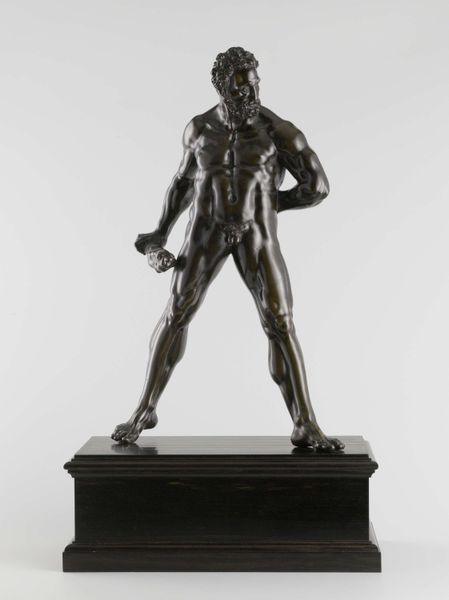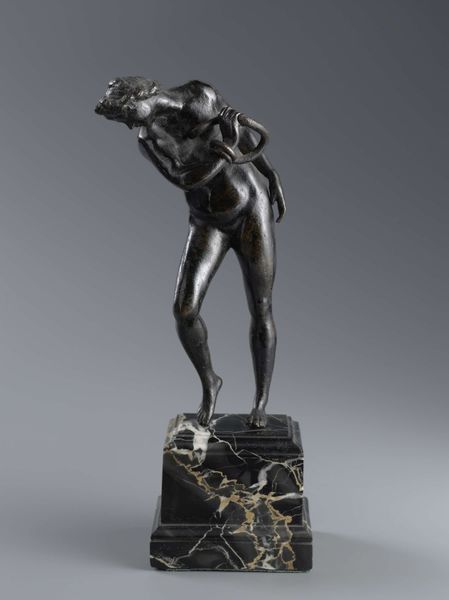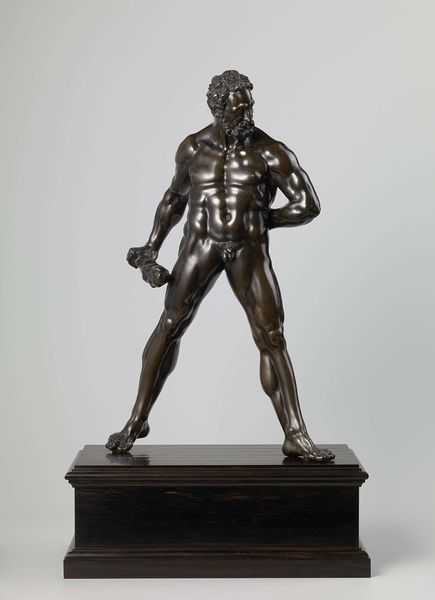
bronze, sculpture
#
portrait
#
art-deco
#
sculpture
#
bronze
#
figuration
#
sculpture
#
modernism
Dimensions: overall: 34.29 × 18.42 × 6.99 cm (13 1/2 × 7 1/4 × 2 3/4 in.)
Copyright: National Gallery of Art: CC0 1.0
Curator: At first glance, I find myself immediately captivated by the dynamism – the sheer force and rhythmic tension – emanating from this figure. Editor: You're right, there's a vibrant energy. This bronze sculpture, "Slavonic Dancer", was created by Harriet Whitney Frishmuth between 1921 and 1927. The medium enhances that energy you perceived, doesn't it? Curator: Absolutely, the bronze, with its cool, reflective sheen, really highlights the lines of the body. Notice how Frishmuth employs strong diagonals to convey a sense of movement, particularly through the extended leg and arms. There's almost a geometric quality to the pose. Editor: Indeed. I'm particularly drawn to the societal context. The Art Deco influence is unmistakable; you see this streamlining of form across many cultural arenas, celebrating progress while sometimes eliding certain labor realities and historical context. Did Frishmuth grapple with representing national identities through dance? Curator: It’s compelling how she captures this idealized form, distilling the essence of dance. We might examine it through semiotics - how does this body "speak"? Does it embody freedom, strength, perhaps a controlled wildness? The dancer's gaze is internal, almost introspective despite the flamboyant posture. Editor: Exactly, who is this performance *for*? During that era, there were powerful cultural dialogues between the East and West as well as tensions rooted in immigration, displacement, cultural appropriation, all of which might be playing out implicitly in this figuration. It brings so many important cultural values into dialogue, whether intentionally or not! Curator: Precisely. Reflecting on it, Frishmuth achieves something fascinating here – a synthesis of raw physical energy rendered in a highly stylized and sophisticated artistic form. Editor: I agree. Looking at this work brings so many of the complex crosscurrents from the early 20th century into sharper view. A dynamic, generative tension captured in bronze.
Comments
No comments
Be the first to comment and join the conversation on the ultimate creative platform.
